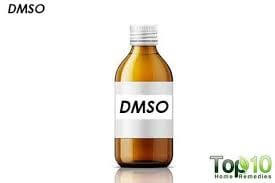
DMSO 250ml 99.97% Pure. Pharma Grade.
DMSO
With over 40,000 articles on its chemistry published in respected scientific journals and 11,000 articles written on its medical and
clinical applications, DMSO was approved and continues to be used by medical doctors throughout 125 countries around the world
including Canada, Great Britain, Germany, and Japan. The range of conditions for which DMSO is used is wide and varied, beginning with
interstitial cystitis, as a preservative of organs intended for transplant, pain, inflammation, gout, osteoarthritis, rheumatoid arthritis,
sports injuries, back pain, fibromyalgia, and scleroderma, stroke, and it has even been found to relieve intercranial pressure caused by
closed head injuries.
DMSO is commonly used by athletes, and veterinarians use it on animals, especially dogs and horses.
There is much information on the internet about the healing benefits of DMSO.
In New Zealand, medical grade DMSO is a prescription medicine. To comply with NZ law, even though the DMSO we are selling is human food
grade, we are selling DMSO specifically as an industrial solvent. Like its near relative, turpentine, it will dissolve and remove paint
from the wall.
To comply with New Zealand law, we cannot give any advice or recommendations on human use.
THE ABOVE IS FROM OUR SUPPLIERS OF DMSO IN NEW ZEALAND, PURE WELLBEING. THE INFORMATION WHICH FOLLOWS IS FROM AN AMERICAN SOURCE.
DMSO’s anti-inflammatory properties come primarily from its antioxidant action.
DMSO is classified as a nonsteroidal anti-inflammatory drug (NSAID), just like phenylbutazone (“bute”). Unlike phenylbutazone, however, DMSO
controls inflammation primarily by acting as an antioxidant.
DMSO draws fluid from tissues.
DMSO is a hygroscopic compound, meaning it attracts water. This property makes the compound especially versatile. For instance, it can reduce oedema in swollen limbs and is often used as part of a “sweat” to combat stocking up. DMSO can also reduce swelling in the brain and spinal cord, which can be literally lifesaving in diseases like West Nile encephalitis. DMSO may be used to draw fluids out of the lungs in cases of acute pulmonary oedema.
Because it pulls water from tissues, DMSO has a diuretic effect, meaning that it increases urination. This can help flush toxins from the body more quickly.
DMSO can carry other substances through the skin.
DMSO’s molecular structure allows many substances to dissolve completely within it. It also allows the chemical to transport these dissolved substances through cell membranes without damaging them, even if these substances wouldn’t be able to pass through on their own.
For instance, skin infections can be difficult because the responsible organisms are buried deep under the skin or crusty, painful scabs. However, a mixture combining antibacterial medication with DMSO can pass through the skin and reach the affected area. For the same reason, DMSO is often added to antifungal medications for treatment and sometimes to steroids for targeted, topical anti-inflammatory treatment.
DMSO may provide pain relief on its own.
Although it’s commonly mixed with compounds to provide pain relief, some studies suggest that DMSO alone has analgesic properties. Research
shows that DMSO slows or blocks conduction of impulses along nerve cells, which in effect reduces pain from musculoskeletal injuries,
postoperative incisions and other sources. Relief is only temporary—lasting up to a few hours—because as the DMSO dissipates, normal nerve
function returns. It can be combined with other pain-relieving drugs, however, to extend the analgesic action.
DMSO, which stands for Dimethyl Sulfoxide, is another natural way to treat lipoma fat deposits. Simply apply this solution
after cleaning your skin with clean hands. DMSO is an excellent solvent, so make sure you don’t have any sort of chemicals around you
and your clothing as it may carry these chemicals to your body
DMSO has been approved by the FDA in the United States only to treat interstitial cystitis. But we probably haven't heard the last of it. DMSO may have promise in treating a variety of other conditions that include:
- reducing pain and inflammation caused by arthritis
- Dimethyl sulfoxide is anti-inflammatory and may be applied topically to reduce pain and swelling. More, DMSO, or dimethyl sulfoxide, has a long history as a topical anti-inflammatory agent.
- treating bladder pain and inflammation
- slowing the progression of cancer
- chemotherapy
- extravasations
- Alzheimer’s disease
- Acne
- Mosquito bites
- DMSO is used topically to decrease pain and speed the healing of wounds, burns, and muscle and skeletal injuries. DMSO is also used topically to treat painful conditions such as headache, inflammation, osteoarthritis, rheumatoid arthritis, and severe facial pain called tic douloureux.
However, research to date has been inconsistent. More research on its potential uses will likely continue for years to come.
Talk to your doctor before using any products that contain DMSO. They can help you understand the potential benefits and risks.
How to use:
Mix DMSO with (for example) magnesium oil in a 70% magnesium oil to 30% DMSO. It acts as a carrier to drive the magnesium
oil deeper into the muscle for greater pain relief. It also relaxes blood vessels which results in better blood flow and
faster healing. You can use any cream or oil e.g. coconut oil.
Some side effects of taking DMSO by mouth or applying it to the skin may include skin reactions, dry skin, headache, dizziness, drowsiness, nausea, vomiting, diarrhea, constipation, breathing problems, vision problems, blood problems, and allergic reactions. DMSO also causes a garlic-like taste, and breath and body odour.
